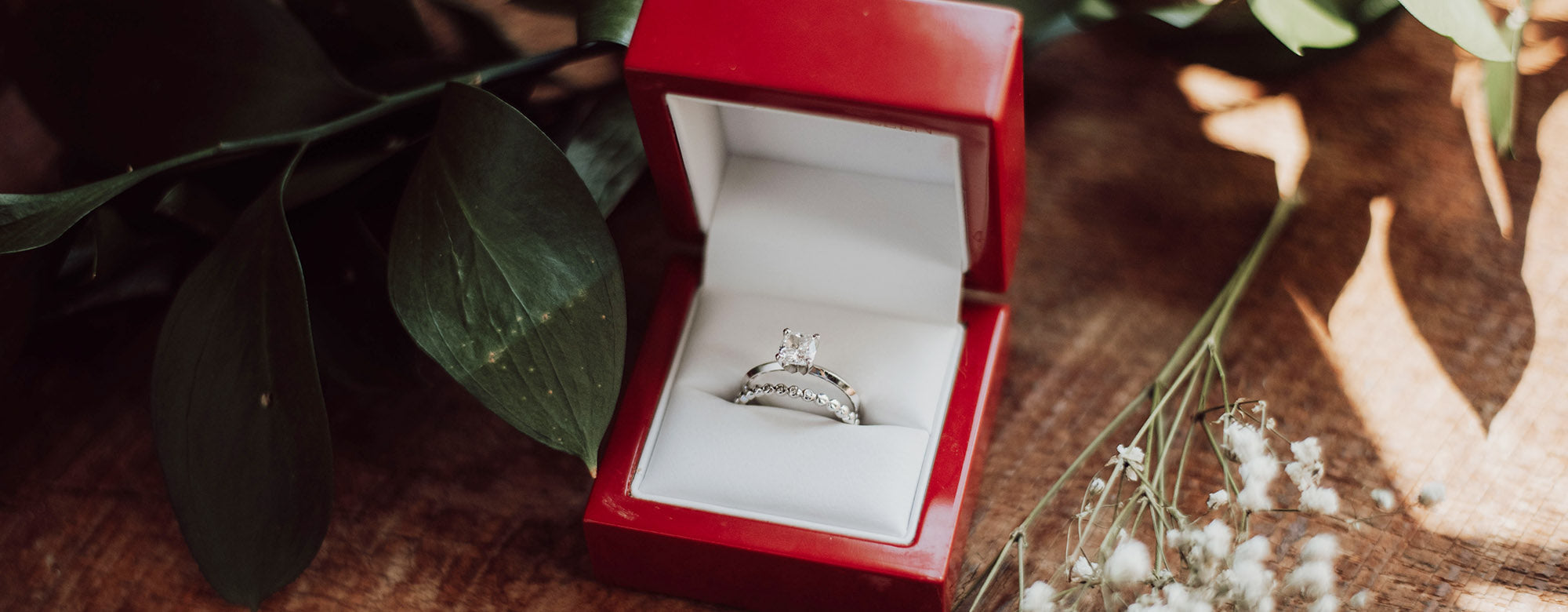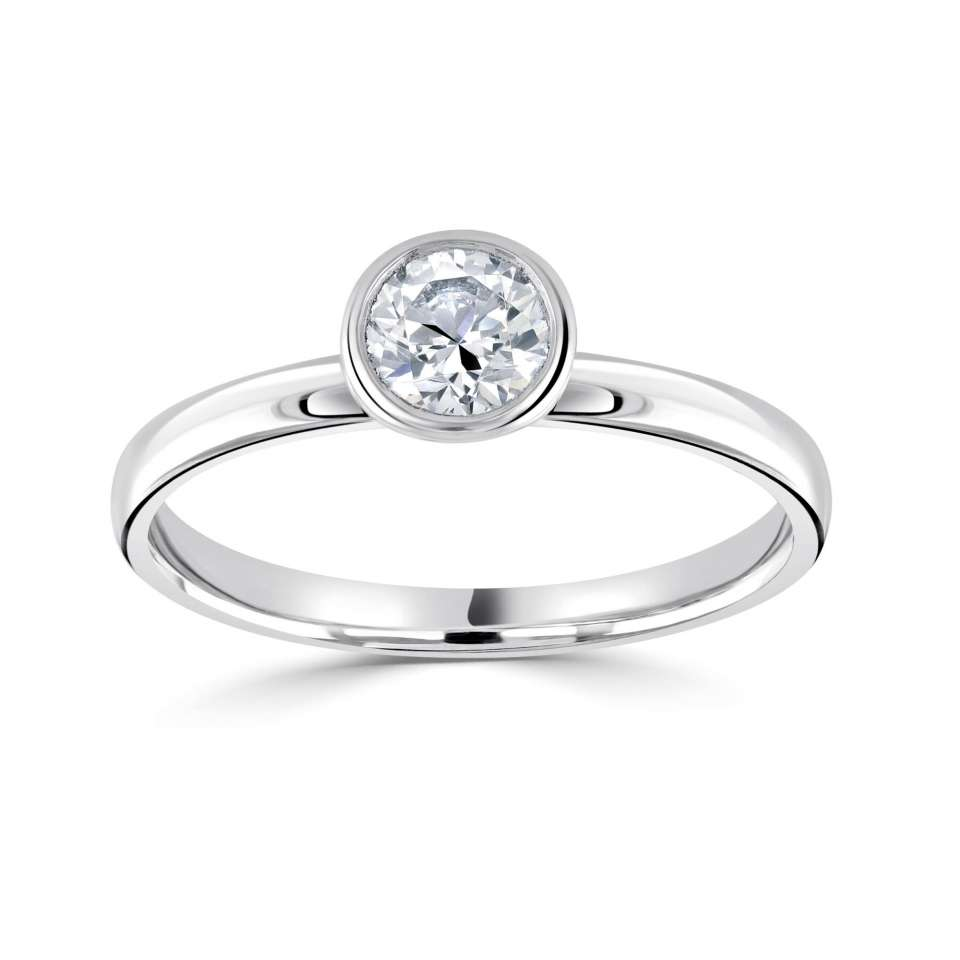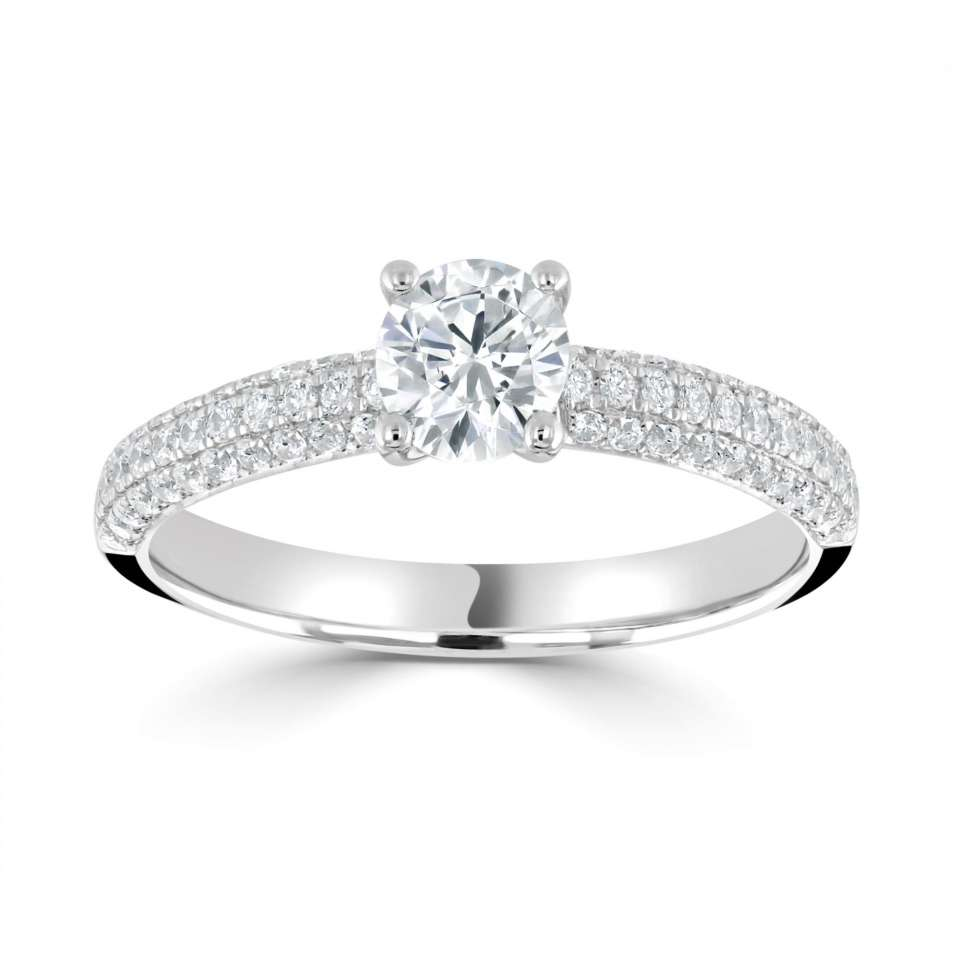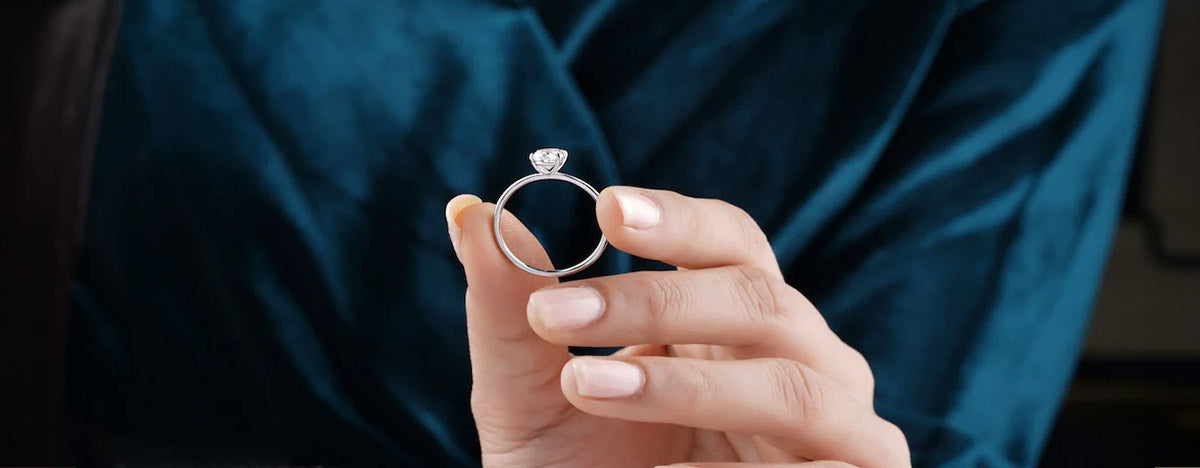
How to Choose Your Engagement Ring Setting
Types of Ring Settings
Below, we'll delve into two types of setting that engagement rings most commonly fall under: claw and bezel.
What is a Claw Setting?
The claw setting (sometimes referred to as the ‘prong’ setting) is the most classic and well-known engagement ring setting. In a claw setting, the stone is held tightly in place by tiny slivers of metal (usually either four or six) which wrap around the stone to hold it in place - these are the ‘claws.’

Claw Setting Advantages
- Allows the most light to hit the stone from all angles, resulting of light to hit the stone for maximum fire and brilliance
- Can be used to set diamonds and other precious gems of all shapes and sizes
- Keeps the gemstone secure
- Timeless and classic
Claw Setting Disadvantages
- Although professional jewellers will always set your ring securely, it's important to remember get your ring checked and tightened and the claws tightened if needed
- A diamond of a smaller carat size may appear smaller when six claws are used as opposed to four
WHAT IS A BEZEL SETTING?

Bezel Setting Advantages
- Can be used with diamonds and other precious gems of all shapes and sizes
- The most secure engagement ring setting available
- Makes for a unique and modern engagement ring option
Bezel Setting Disadvantages
- The diamond is encircled by metal, which reduces fire and brilliance
- Due to the nature of the setting, the diamond can appear smaller than it actually is
Now that we’ve defined the differences between the claw and bezel setting, let's take a look at some of the most popular ring settings from each category.
POPULAR ENGAGEMENT RING SETTINGS
1. CLAW SETTING/SOLITAIRE

The most popular engagement ring style combined with the most popular engagement ring setting: name a more perfect match than that. The claw setting was designed for single-stone, or solitaire, rings. The lack of any other metalwork or gemstones allow the centre stone to be the main attraction.
This solitaire engagement rings is a true classic and a constant amidst shifting engagement ring trends, famed for its timeless appearance, and a favourite among those who like to keep it simple yet sophisticated.2. Bezel Setting
Because of how secure this setting is, it may be a desirable option for people with a more active lifestyle.

3. TIFFANY Setting

This 6-claw setting was patented by its namesake in 1886, and designed to maximise the amount of light passing through the stone.
The claws in the Tiffany setting "lift the diamond off the band and into the light, allowing it to sparkle and take centre stage," says Tiffany & Co. chief gemologist Victoria Wirth Reynolds.
Though it amplifies a stone's beauty, the prongs on a Tiffany cut ring are set higher than usual by nature of its design, so it's important to get it checked regularly to make sure the diamond remains secure.
4. CATHEDRAL Setting
A cathedral set ring is a claw set ring with a twist.
This setting also features two 'cathedral' arches which connect the band to the claws and hold the centre stone in place. This adds extra height to the stone and can make it appear larger and more prominent, along with all the other benefits of the claw setting.

5. PAVé Setting

The pavé setting (pronounced pah-vay, originating from the French verb ‘to pave’) is an excellent way to maximise your diamond’s sparkle even further.
With this setting, the shank of the ring is lined –or paved– with tiny accent diamonds, typically less than 0.1 carats, either all around or half-way around the band. Each pavé diamond is securely set using tiny prongs that are virtually invisible, as opposed to the larger prongs that hold the centre stone. The effect is one of continuous, brilliant sparkle that can be seen from all angles.
6. Split Shank Setting
The ‘shank’ is another word for the band of the engagement ring.
Split shank engagement rings have their shanks split in two, the effect being two shanks originating from the stone and negative space on the sides on the diamond.
Split shank engagement rings commonly also feature a pavé setting.






Leave a comment
This site is protected by hCaptcha and the hCaptcha Privacy Policy and Terms of Service apply.